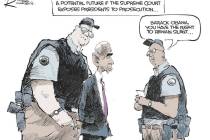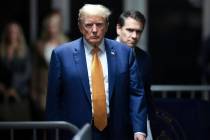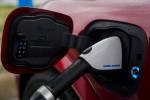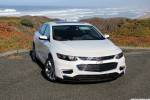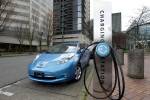Consumer choice
In the 1960s and '70s, a lucrative commerce developed in bundling used American blue jeans and shipping them to the Soviet Union, where they were then pieced out at a relatively high price.
Wearing American blue jeans was a silent "vote," demanding the same kind of consumer choice, the same kind of freedom to declare one's individuality, for which America was the envy of the world.
No one in a free country ever pined to import a Russian Lada, either. The one-size-fits-all Russian car was widely regarded as a styleless and underpowered clunker.
American automakers introduced power brakes, power steering, automatic transmissions, electric starters, streamlining and a rainbow of colors not because some government agency told them to, but to attract buyers.
Those days are now ending.
Instead, Washington seems determined to behave more like the old Soviet Union, forcing on consumers not the cars for which they express a preference with their checkbooks, but instead whatever the elite decide are good for us.
Facing fines in four years unless they comply, "Automakers are spending more than $50 billion to meet the government's 2016 fuel-economy law," USA Today reported Thursday, "but consumers aren't buying enough of the fuel-efficient vehicles necessary to allow automakers to achieve the required 35.5 miles-per-gallon average."
Even with gasoline prices pushing $4 a gallon, "Hybrid sales actually shrank from 2.9 percent of new vehicle sales in 2009 to 2.4 percent last year," the newspaper reports. In the first two months of the year, despite government incentives, Chevrolet sold 602 Volts; Nissan sold 154 Leafs.
The answer? "Automakers have to work harder advertising their best mileage models," says Mark Cooper, director of research at the Consumer Federation of America.
Really? So Washington must not stop with merely ordering manufacturers to build models that consumers don't want; it must also require that they spend more money promoting their least profitable, unwanted models?
More compulsion is not the answer. The answer is to restore the free consumer choice that once made America the envy of the world -- and the world's leader in innovation.
Small cars tend to get better mileage. Big cars can be safer. Young drivers prefer low cost and zippiness; older drivers prefer reliability and comfort. It's not a one-size-fits-all world.
Furthermore, it's been tried, and it didn't work.










